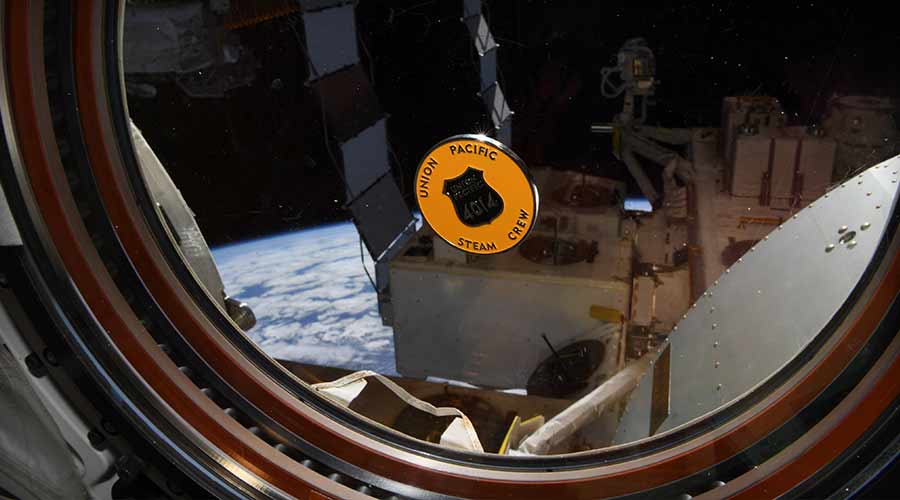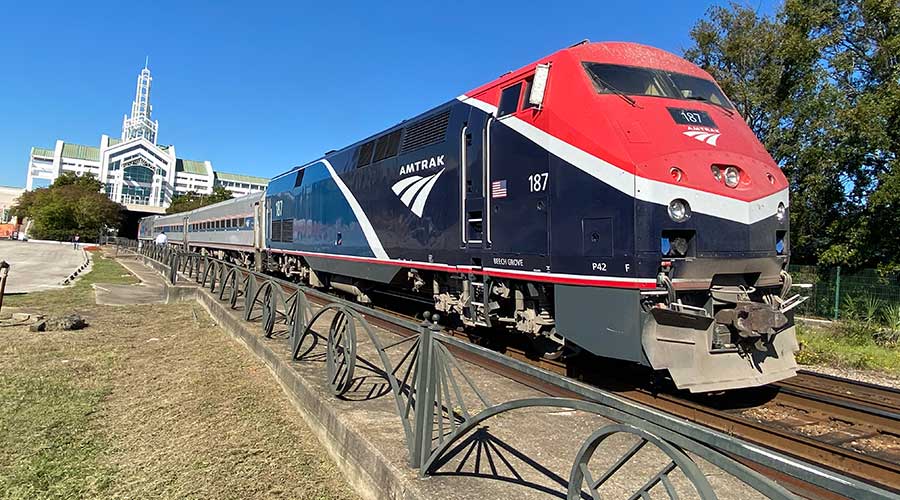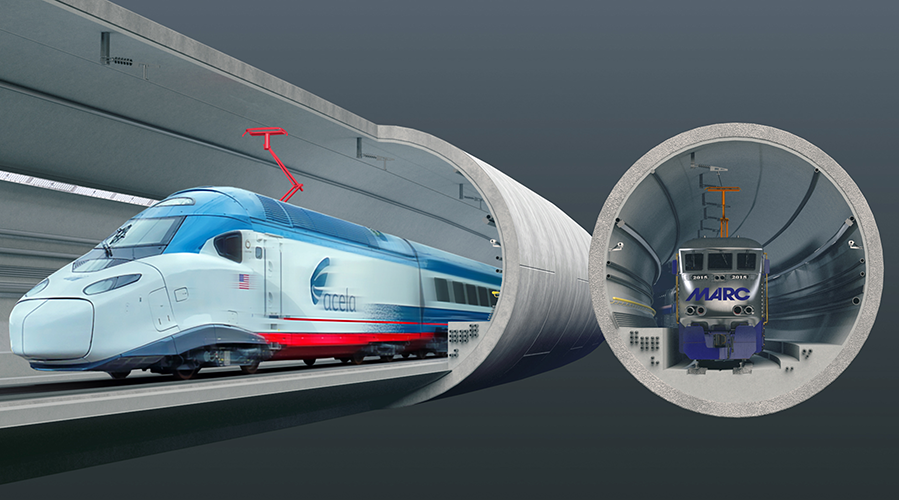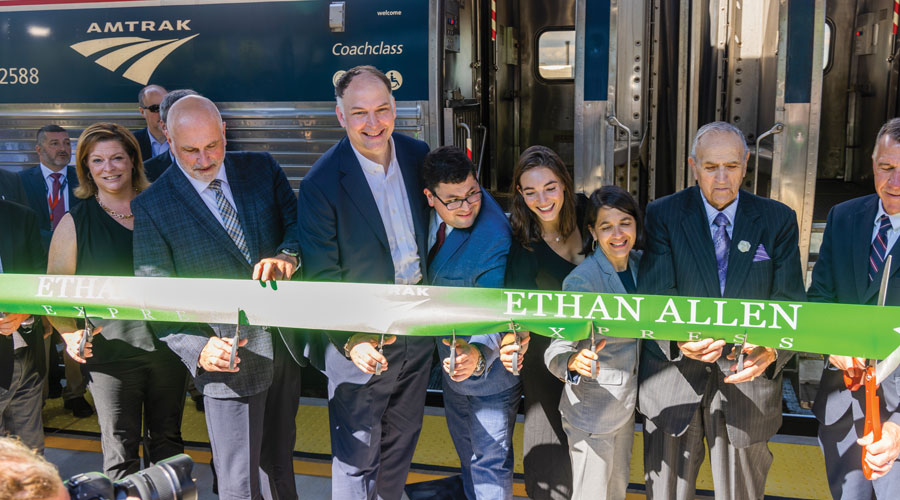Stay updated on news, articles and information for the rail industry
December 2020
Rail News: Amtrak
Ushering in the next generation: Amtrak prepares to introduce its trainsets of the future
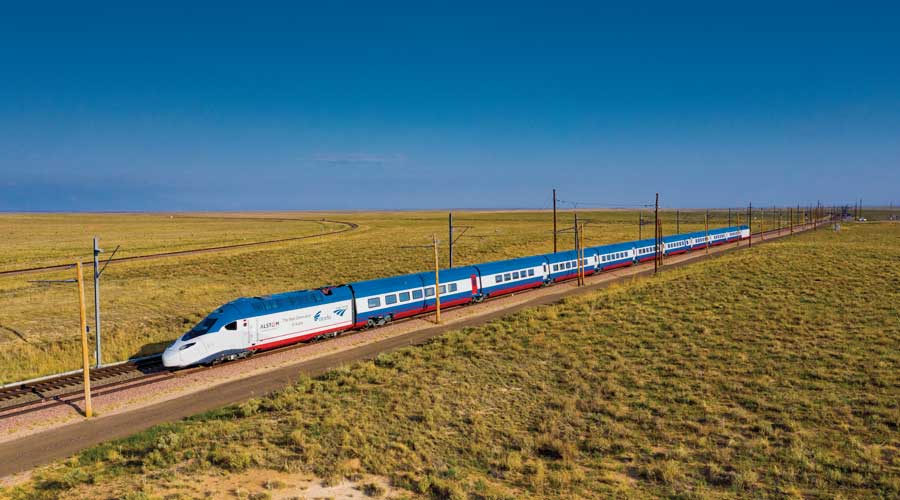
By Vesna Brajkovic, Associate Editor
Dismal ridership, service suspensions, layoffs and revenue dips have colored Amtrak’s story in very dark hues since the COVID-19 pandemic broke out in North America earlier this year. The hardships abruptly ended the trajectory Amtrak was on last year to break even financially by fiscal-year 2021.
Still, not all of the goals set by the nation’s intercity passenger railroad have been lost to the black cloud hovering over 2020. Amtrak has been keeping one of its biggest priorities and modernizations on track this year: the introduction of next-generation Acela trainsets into revenue service on the Northeast Corridor (NEC) by 2021’s end.
Despite quickly outlining measures for enhanced cleaning and disinfection at its stations and onboard trains, and implementing mask requirements for all riders and employees during the pandemic, Amtrak faced state travel restrictions and stay-at-home orders that changed the course of business and leisure travel across its network.
“We carried more than 80,000 daily passengers in February, but by April there were less than 4,000 passengers per day,” Amtrak Chief Executive Officer Bill Flynn said during a hearing before the U.S. Senate Committee on Commerce, Science, and Transportation in October.
As the pandemic swept across North America in late April and May, Amtrak made substantial service reductions to the NEC — which runs between Boston, New York City, Philadelphia and Baltimore — and its state networks. By October, the railroad had reduced most of its long-distance services from seven to three days a week.
Ridership remains at about 25% of pre-COVID levels, and based on forecasts made late last month, ridership and revenue is expected to only improve to about 37% of pre-COVID levels by the end of fiscal-year 2021 on Sept. 30, Amtrak officials said during a press conference last month.
That’s a far cry from this point last year when the railroad was setting new records for ridership, revenue and financial performance. At the end of FY2019 on Sept. 30, 2019, Amtrak recorded its lowest operating loss in history at $29.8 million.
With FY2020 total operating revenue down by 32% and ridership down by 15.2 million customer trips compared with FY2019 levels, Amtrak is now facing a new year with the challenge of continuing current service levels, restoring daily long-distance service, pursuing critical infrastructure projects, and staving off the furloughs of 1,950 workers and elimination of 100 management positions.
To do so, the railroad is calling for $4.9 billion in federal funding. Typically, Congress provides Amtrak about $2 billion annually toward its operations.
“Without additional funding for 2021, we will be forced to further reduce service, defer critical capital projects and make more job reductions,” Flynn said in a press release.
Appointed to head Amtrak in April, Flynn succeeded Richard Anderson just as the railroad — and nation — braced for the pandemic’s impact. Yet all the while, Amtrak’s next-generation Acela was clearing several milestones during what’s now been a long period of testing.
An Alstom-made asset
The first two Acela trainset prototypes, manufactured by Alstom, have achieved a top speed of 167 mph and completed more than 20,000 miles of testing on the NEC and at the Transportation Technology Center Inc. (TTCI) near Pueblo, Colorado.
TTCI is currently conducting performance testing — including acceleration, braking and wheel slip/slide function analyses — on one prototype. The trainset is fitted with 60 sensors, including accelerometers, inclinometers, gyroscope, strain gauges, current and voltage probes, thermocouples and pressure transducers.
Testing will conclude in February, after which the prototype will return to Alstom’s manufacturing facility in Hornell, New York, to be fitted with interior finishes. By Jan. 1, Amtrak plans to have two production trains fitted with full interiors.
A second trainset is being tested on segments within the NEC that present geometries and curvatures representative of the commercial Acela route. Operational tests are being performed on the entire route between Washington, D.C., and Boston, in the evening during off-peak hours.
Amtrak expects to introduce the new Acela in late 2021. The potential availability of vaccines at that time could help prompt more people to travel on the NEC, Flynn said during a Nov. 10 interview.
The demise of business travel
The NEC has particularly struggled to attract ridership during the pandemic because it predominantly serves business travelers.
“We are operating at a level of 25% or so in the NEC corridor, including our Northeast regional and our Acela services,” Flynn said during the October Senate committee hearing.
On long-distance routes — and to some extent, on state-supported routes — trips are taken for student family visits, irregular ad-hoc business travel, vacations or medical visits for rural disabled and elderly people, said Jim Mathews, president and CEO of the Rail Passengers Association (RPA), in an email.
“With so much business now shifted to an online environment, it is clear that many trips that were once routine on the NEC may now be judged by corporate travel overseers as unneeded,” he said.
Still, predicting the end of business travel would be foolish, Mathews believes.
“There’s a kind of narcissism at work in these types of arguments, the presumption among those who have been able to stay at home and work from a laptop that everyone else is just like them and works the same way,” he said.
Amtrak has found that when riders are aware of disinfection, air filtration and other personal safety practices, riders are one-and-a-half to two times more likely to take another trip. And that’s good news for the reputation of the next-generation Acela and rider confidence because the trainsets will launch with enhanced cleaning practices and adhere to seating arrangements that allow social distancing, Flynn says.
In bad news, outside of the NEC, rural and state-supported routes have been slashed. During the 2020 peak summer season, Amtrak’s ridership on long distance routes was less than 50% of what was expected, he said.
Typically, riderships drops by at least 40% in the winter months. But as of late November, Amtrak was expecting only a 20% level of ridership.
The dramatic drop off led to some services being cancelled in their entirety or reduced frequencies.
Amtrak chose an inopportune moment to slash frequencies on the long-distance network, depriving an already underserved population – rural America – of what has proven to be an essential service, Mathews said.
“The coronavirus crisis is sending new travelers to Amtrak in high numbers, driven in part by Amtrak’s aggressive marketing of itself as a safer and more distanced alternative to other kinds of travel. It’s the perfect moment,” he said. “But with shorter trains and fewer of them, Amtrak is squandering the opportunity to show its unique value.”
However, the move to three-times-a-week service for most long-distance services is only temporary, Flynn says.
“It responds to the absolute very low levels of ridership that we have in the long-distance services. Our intention is to bring those services back,” he says.
By late February 2021, Amtrak expects to make some decisions about restoring long-distance services in May and June, based on the amount of forward bookings on the network and other factors.
Decisions will be made in February regarding summer restorations because restoring a long-distance service takes about three months to recall and recertify crews, and reassemble trains and consists.
Penny wise and pound foolish
Still, the move to temporarily cut long-distance routes and run short consists was criticized by the RPA. While adjustments were inevitable, a more sensible response would have been to shorten consists rather than simultaneously eliminate 57% of the operations, said RPA’s Mathews.
“Amtrak is focusing on avoiding cost while throwing revenue overboard and kneecapping the long-distance routes as they do it,” he said.
The railroad’s COVID-coping tactic of dropping daily service will hurt Heartland America’s economies to the tune of at least $2.3 billion while saving Amtrak less than $213 million, Mathews estimates.
But Flynn has stated that the levels of ridership are falling off so dramatically that running a daily service without some financial assistance will essentially reduce the company to a very precarious state.
Amtrak then would be required to take funds that have been allocated for capital projects that would otherwise go across its network and transfer funds from the NEC to the national network, which is prohibited under current regulation, Flynn said at the October hearing.
Despite the temporary suspensions the railroad deemed necessary, Amtrak still plans to invest in its national network. It’s on track to replace its diesel locomotives with ALC-42 Siemens Chargers on the long-distance and state-sponsored routes.
Beginning in spring, Amtrak plans to start taking deliveries of some of the 75 new locomotives.
The ALC-42’s will feature Tier IV engines designed to reduce carbon and particulate emissions, cut operating costs, make operations more efficient and contribute to Amtrak’s sustainability goals, Flynn says.
“[And] we will be bringing in a whole new generation of rail cars that will replace the large part of our fleet over the next 8 to 10 year period of time,” he says.
Next year, Amtrak expects to seek funding to support the return of its long-distance routes and prepare to usher in the new Acela just as President-elect Joe Biden takes office on Jan. 20.
Often referred to as “Amtrak Joe,” Biden — a longtime rider — is known for his love of Amtrak. During his Senate career, he regularly rode Amtrak trains between the U.S. Capitol and his home in Delaware.
Some Amtrak advocates hope the railroad will obtain more federal support under a new administration. While it benefited from receiving more than a billion dollars in federal Coronavirus Aid, Relief, and Economic Security (CARES) Act funding that made a difference through FY2020, the railroad needs more, Amtrak leaders say.
Virtually all of the CARES Act money has been spent or allocated to be spent by 2020’s end.
Congress has not yet passed a FY21 appropriations bill, but approved a continuing resolution that will expire Dec. 11. As of press time, Amtrak was focused on the potential for a new funding level as the new Congress moves in. Until then, Amtrak is operating at a funding level of $2 billion.
“This continuing resolution, coupled with no additional COVID emergency funding, is very concerning to Amtrak given our dramatic revenue loss during this pandemic,” Flynn says.
Email questions or comments to vesna.brajkovic@tradepress.com.


 LRW Honors Amtrak’s Acheson As Railway Woman Of The Year
LRW Honors Amtrak’s Acheson As Railway Woman Of The Year
 From Editor-In-Chief Foran: Of Gender Equity And Inclusion
From Editor-In-Chief Foran: Of Gender Equity And Inclusion
 Spotlight On Some Of Today’s Rail Safety Products
Spotlight On Some Of Today’s Rail Safety Products
 Women of Influence in Rail eBook
Women of Influence in Rail eBook
 railPrime
railPrime